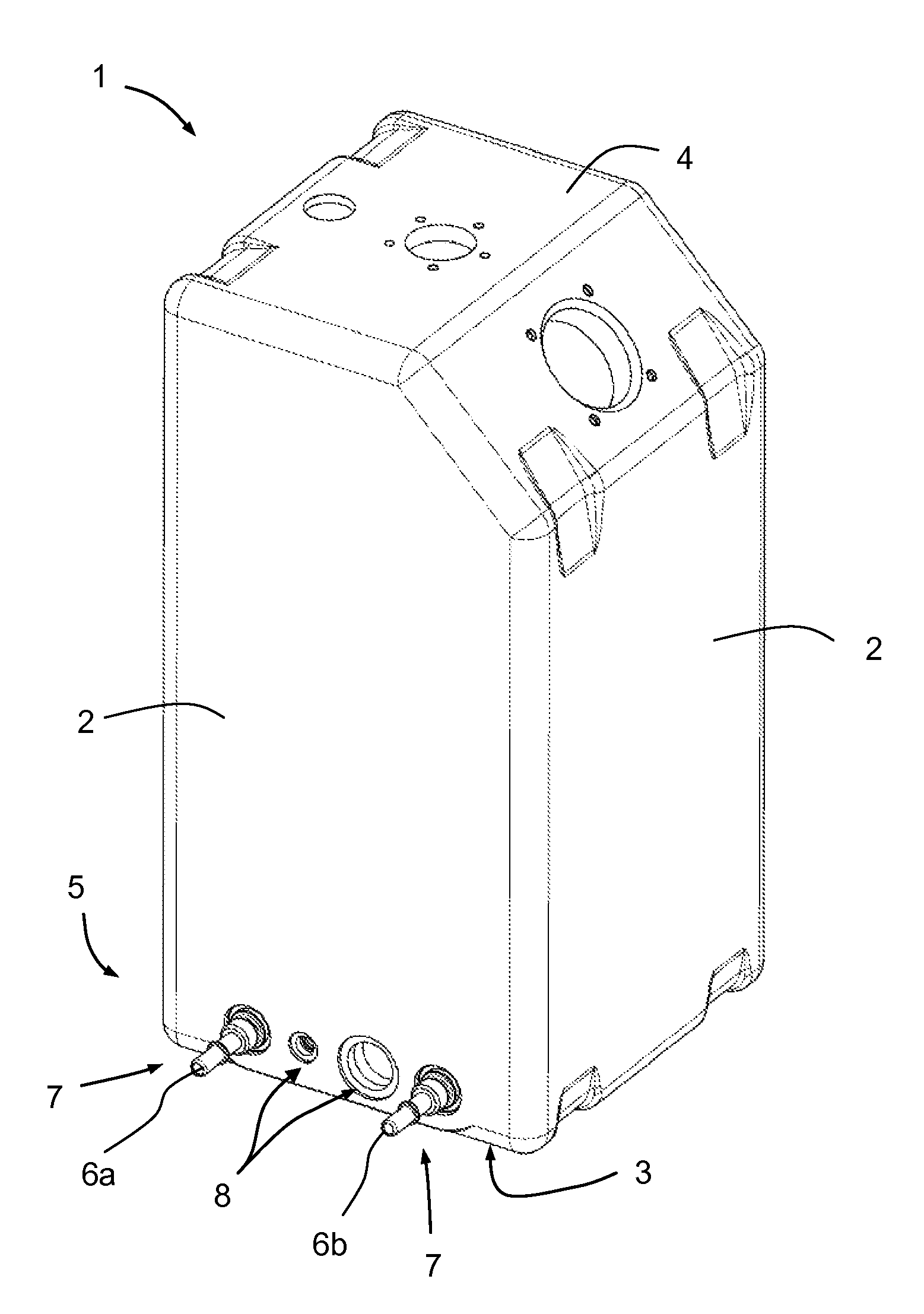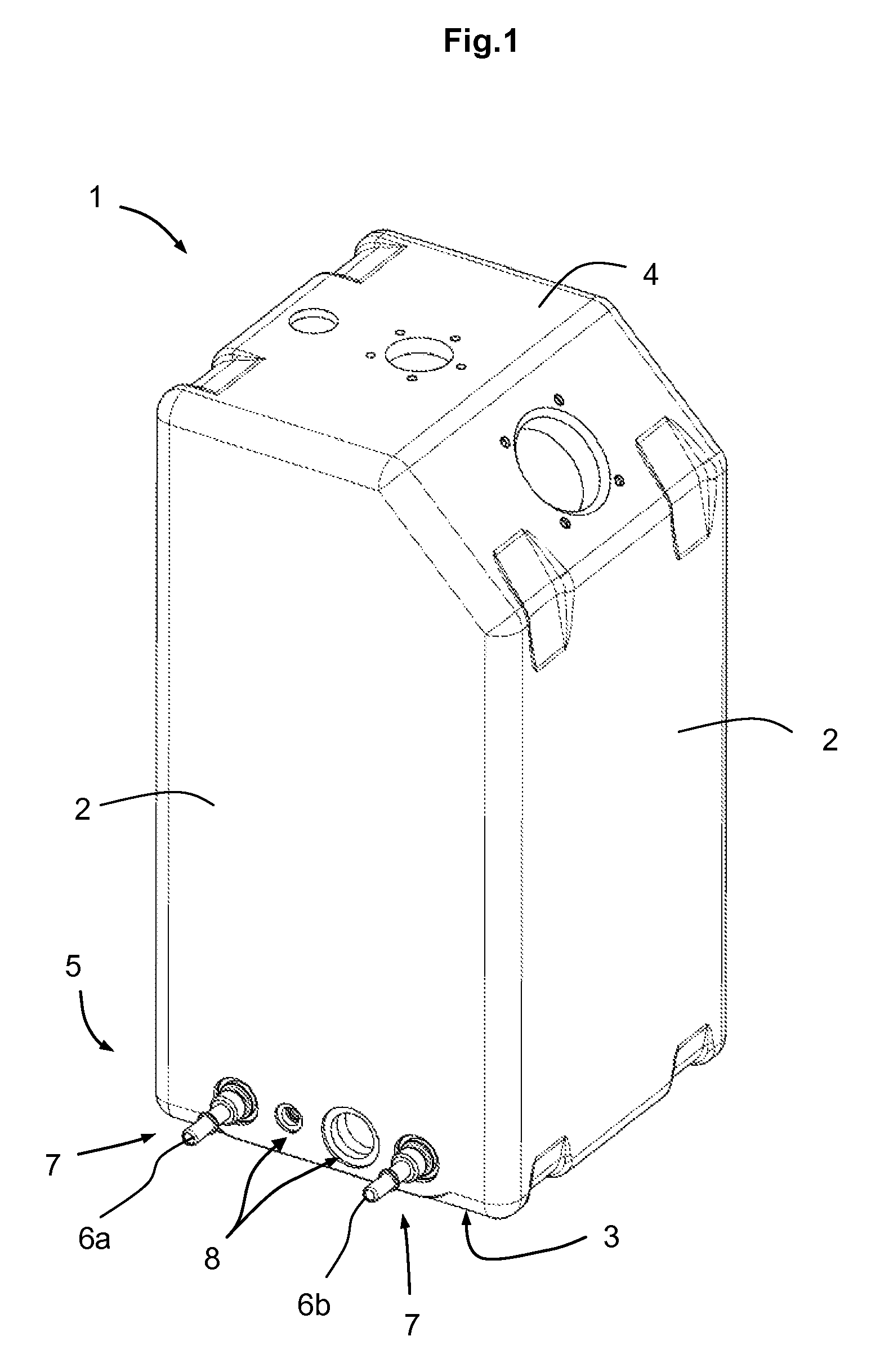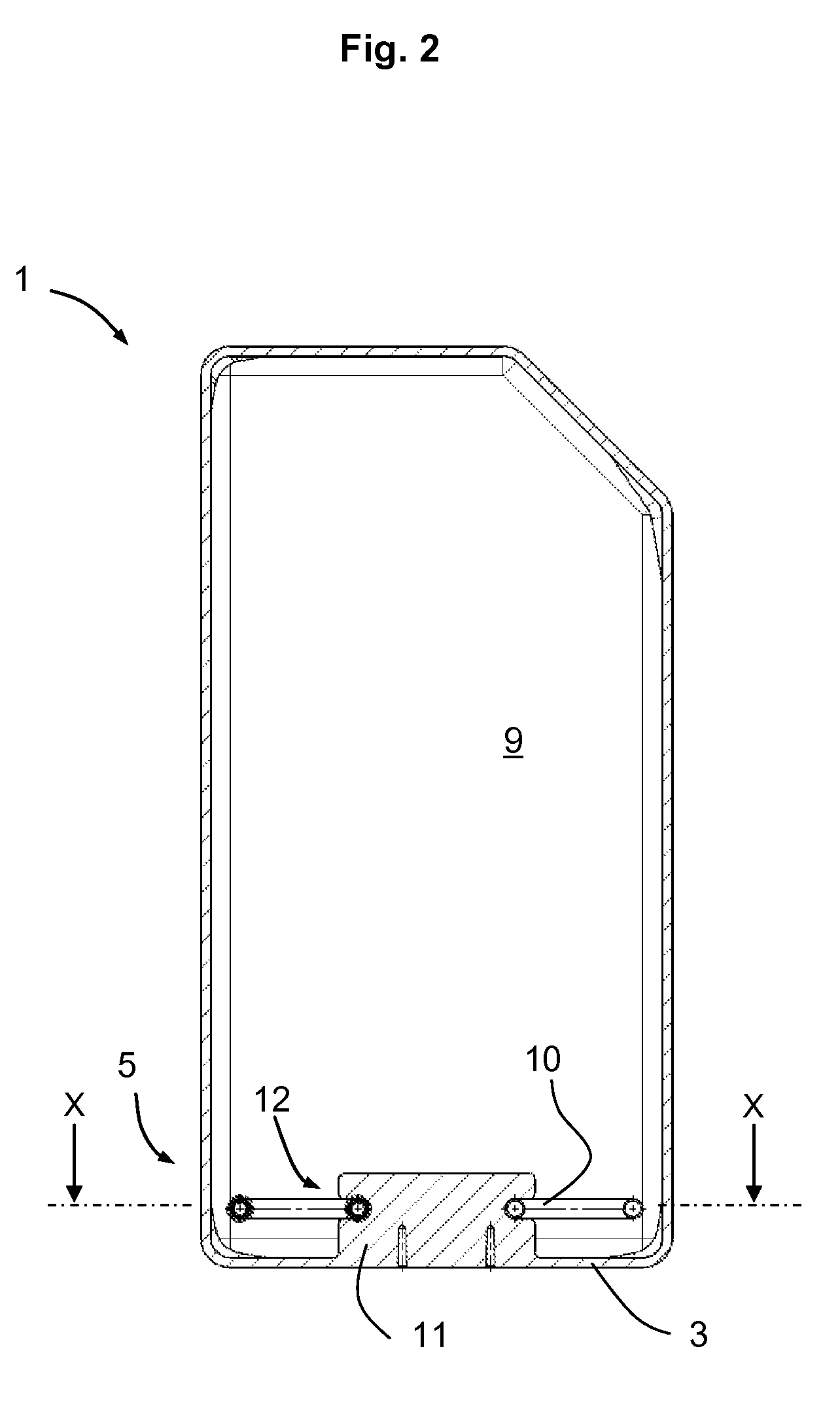Heatable liquid container made from plastic material and production method therefor
a plastic material and container technology, applied in the direction of fluid heaters, machines/engines, light and heating apparatus, etc., can solve the problems of affecting the heating element, and almost entirely converting environmental harmful nitrogen oxides,
- Summary
- Abstract
- Description
- Claims
- Application Information
AI Technical Summary
Benefits of technology
Problems solved by technology
Method used
Image
Examples
Embodiment Construction
[0020]The liquid container 1 shown in FIG. 1 is initially formed by side walls 2, a lower container wall 3 and an upper container wall 4. Upper container wall 4 has one horizontal and one sloping section. Apertures are formed in each of the sections, and these may be used for example as filling and emptying apertures, but also as connection ports for additional devices such as fill level sensors, temperature gauges, or quality sensors. Connector ends 6a and 6b of a heating element 10 located inside liquid container 1 pass out through the lower area of container side wall 2, base area 5 of the liquid container 1. Connector ends 6a, 6b are each individually equipped with adapters 7 for connection to a suitable heat source, and are each separately encased in the container side wall in sealing manner by sintering. Further connection apertures 8 are also created to allow connection of other suitable devices as desired.
[0021]FIGS. 2 and 3 illustrate the construction of liquid container 1 ...
PUM
 Login to View More
Login to View More Abstract
Description
Claims
Application Information
 Login to View More
Login to View More - R&D
- Intellectual Property
- Life Sciences
- Materials
- Tech Scout
- Unparalleled Data Quality
- Higher Quality Content
- 60% Fewer Hallucinations
Browse by: Latest US Patents, China's latest patents, Technical Efficacy Thesaurus, Application Domain, Technology Topic, Popular Technical Reports.
© 2025 PatSnap. All rights reserved.Legal|Privacy policy|Modern Slavery Act Transparency Statement|Sitemap|About US| Contact US: help@patsnap.com



